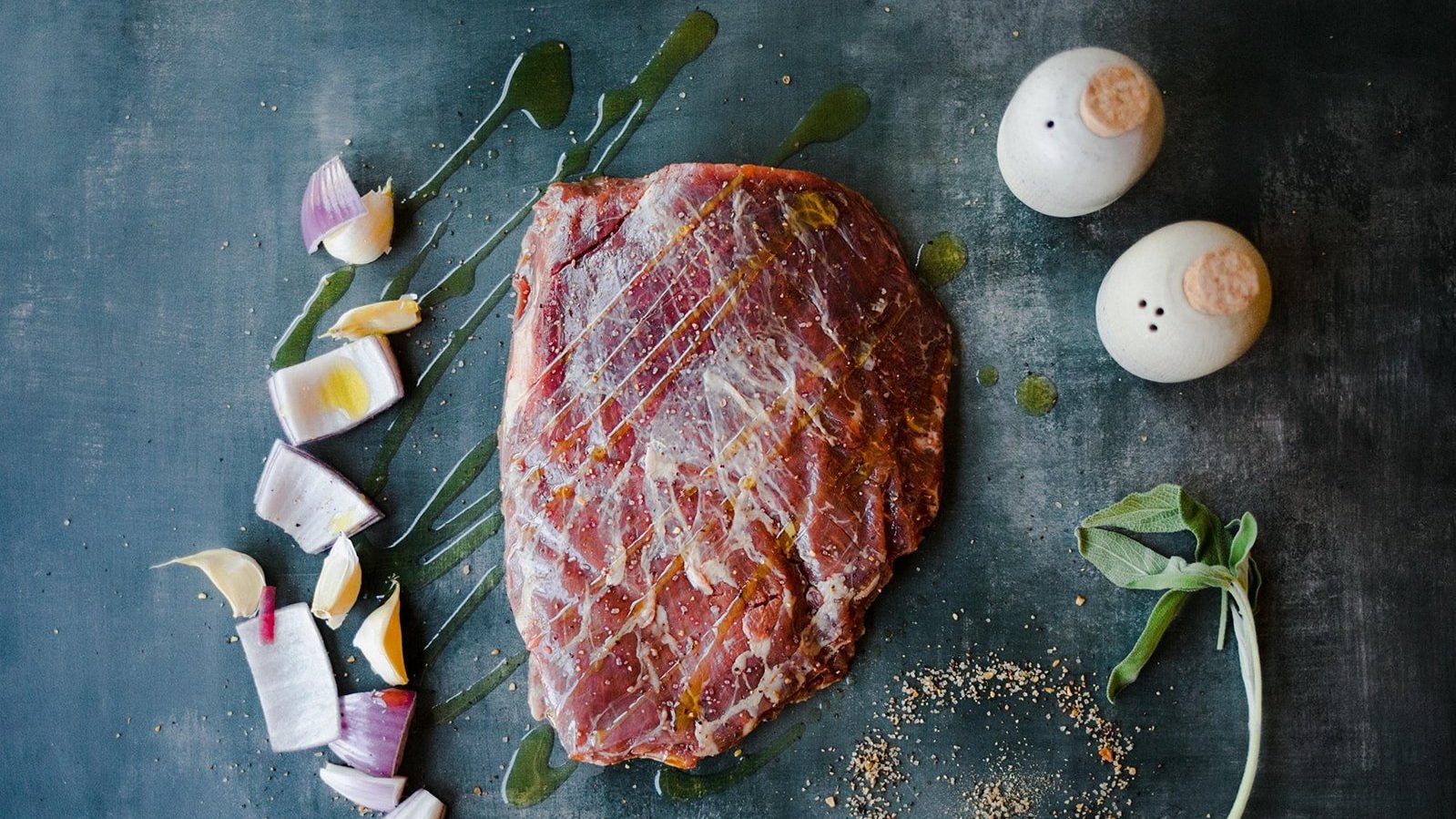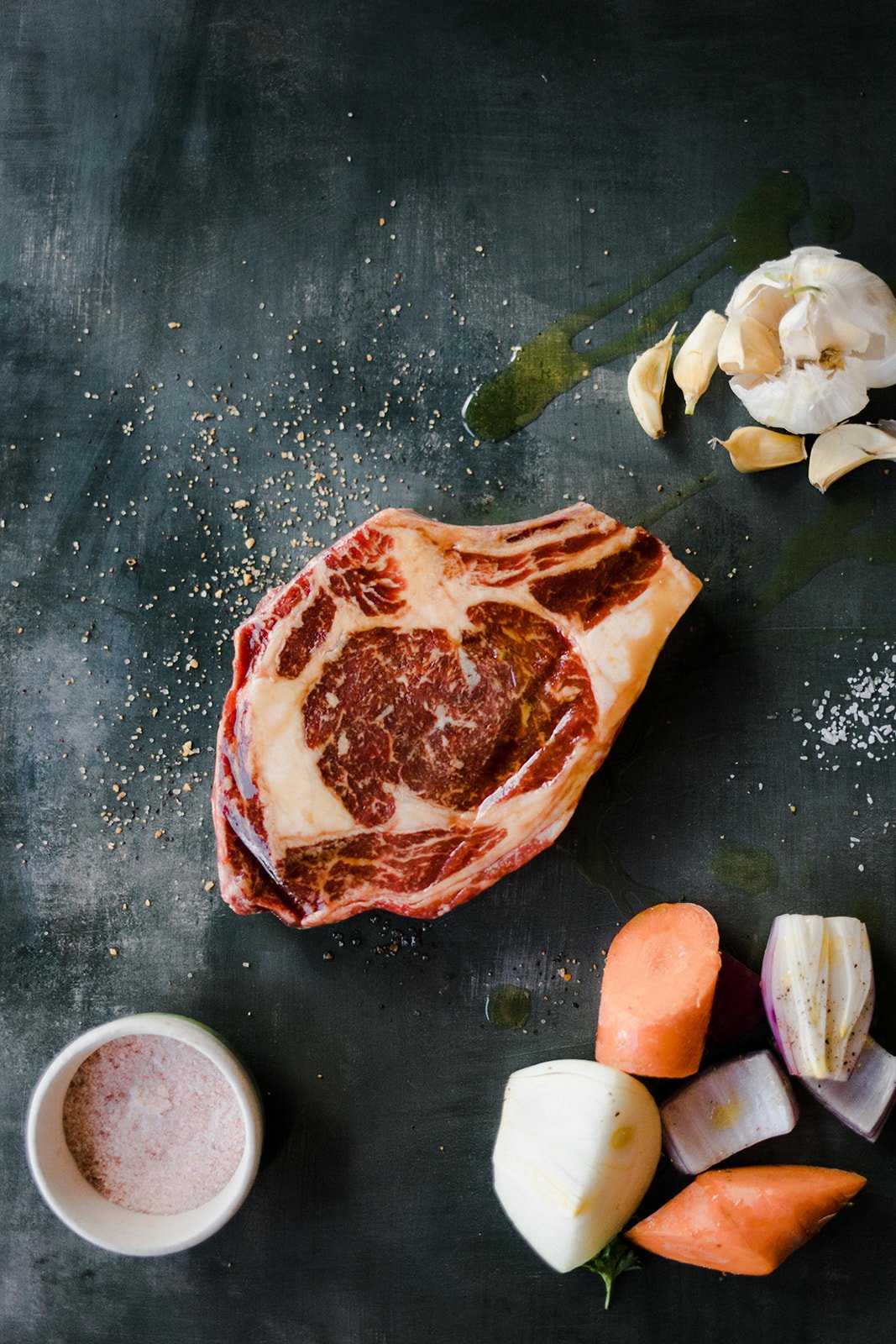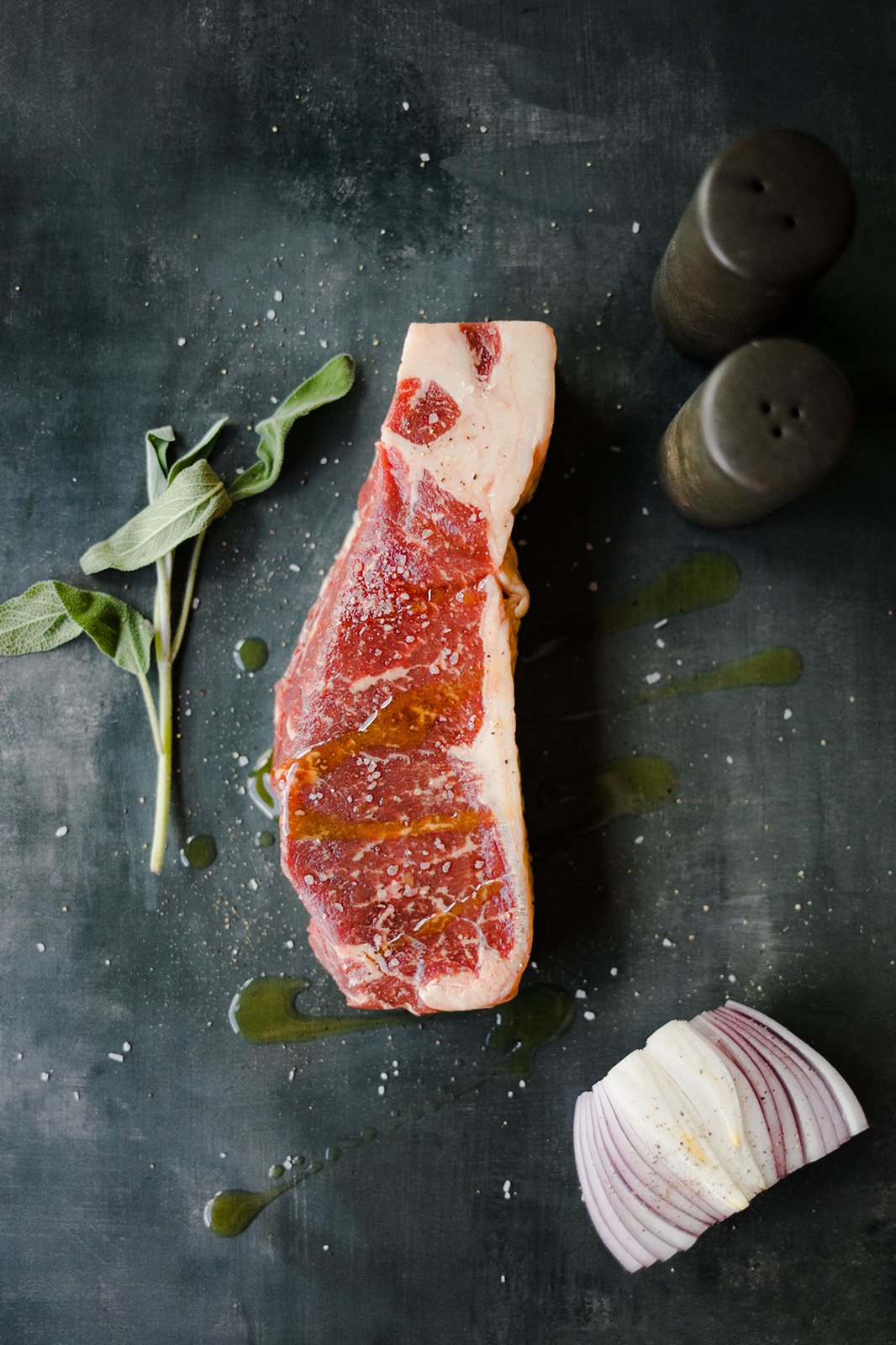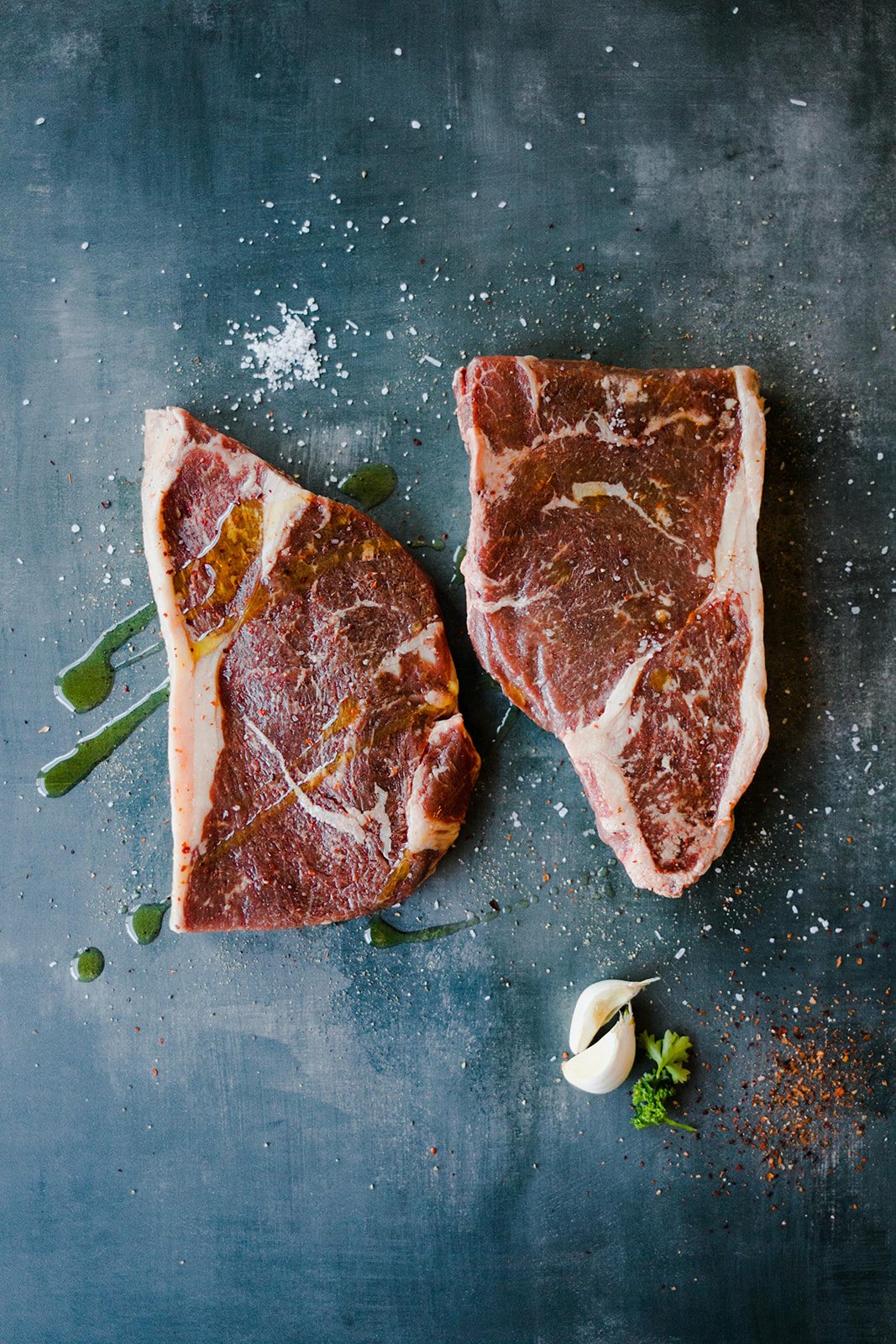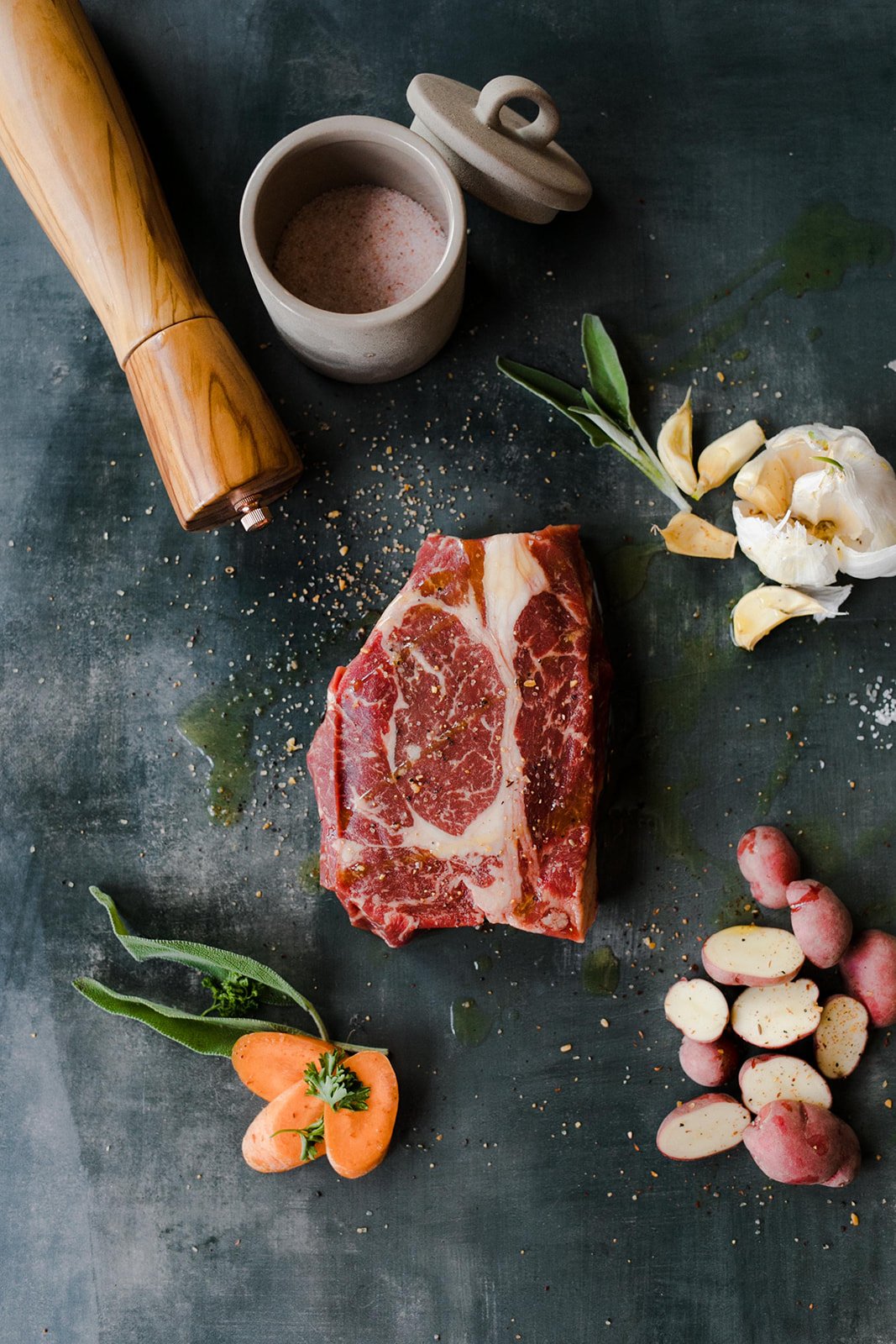A Guide to Meat Cuts
Have you ever opened a beef box from us or walked down the meat aisle at the grocery store and not understood the ways to prepare it?
At Rancho Largo we are dedicated to our mission of producing high quality beef for the consumer that wants to trust the source of their protein. However, this week we just want to walk you through the basic cuts of meat and break it down so that our consumers understand exactly what they’re purchasing.
THE BIG 3
Rib Eye
The rib section lies directly behind the shoulder from roughly the 6th to 12th ribs. This whole section can be cut into prime rib roasts or cut individually into rib eye steaks. There are roughly 14 ribeyes in a half beef, varying in size depending on the frame size of the animal. Technically a rib eye steak is boneless, and a rib steak or prime rib steak is bone in, like our cuts are.
Man evolved to crave the flavor and nutrients in fat. The word for that heavenly flavor of seared fat is umami. Rib eye is your cut if you ceased evolving as a caveman, a description which definitely fits Grady and Jeff. Rib eyes are heavily marbled and usually cut with a strip of fat on the outside and a strip through the steak. You’ll have to watch the flame ups on the BBQ closely but ribeye is the fat lovers cut. Note: it is unethical to request a Rib Eye and not eat the fat.
Tenderloin
Tenderloin steaks also come from right behind the ribs and continue into the sirloin, right in front of the rump. The tenderloin can be called backstrap, fillet, fillet mignon, chateaubriand, tournedos, medallions, or filet de boeuf. An animal that yields 400 lbs. of meat cut and wrapped will only yield 6-8 lbs. of tenderloin.
Those of you who evolved beyond the caveman, such as Brooke and Lynda, will likely prefer tenderloin to rib eye. If you prefer roasted prime rib to rib eye steak, you will likely also love tenderloin. The tenderloin lacks heavy marbling and has no strips of fat through the cut so the flavors are more delicate than rib eye. The name says it all – this is hands down the tenderest cut of meat in an animal.
NY Strip
The NY strip, also called the loin strip, wing, club, or simply strip, comes from the same loin region as the tenderloin. The NY strip is the long narrow side of a T-bone steak. When left intact, the T-bone attaches the NY strip to the tenderloin. A porterhouse steak is the same as a T-bone but cut further back in the loin where the tenderloin portion is larger.
If you can’t decide whether you like tenderness or robust flavor, then you are a NY strip person. The NY avoids the flaming BBQ but has enough marbling to bring out the umami.
THE HIDDEN GEMS
Top Sirloin
Top sirloin steaks lie at the top of the rump. These cuts are also called dinner steaks, sirloin, or top butt steaks. The top sirloin is a supportive muscle, meaning that it is used less intensely by the animal, thus making it tenderer. Because of this, top sirloin steaks are better than sirloin tip steak, which is cut lower down in the muscles of the rump making it tougher. Top sirloin is analogous to NY strip in that it is joined to the tenderloin by bone.
Top sirloin is the workingman’s steak. It’s less expensive and not as tender as tenderloin, and it lacks the fat and marbling of a rib eye. However, be ready for a flavor explosion. A good top sirloin has a beefy flavor, distinct from the fatty flavor of rib eye and NY. In recent years I’ve taste tested our rib eyes; a tough duty. But I’m realizing I can tell more about the quality of an animal from the top sirloin. The top sirloin always packs that unique flavor, and if it is also tender, the rib eyes will be out of sight.
Flat Iron
The flat iron is cut from the upper shoulder muscles of the animal. Cattle don’t pull their front legs up and back very often so this cut is a hidden gem from the chuck portion of the animal. Stress tests show that the flat iron is the second most tender muscle from a beef carcass. Can you guess the most tender? That’s right, the tenderloin. Some call the flat iron a poor man’s tenderloin but those people aren’t focused on flavor. The flat iron lives in there with the top sirloin in terms of unique beefy flavor not hidden by fat. Don’t waste this cut by preparing it anywhere except a grill.
Tri Tip
The tri tip comes from the point of the hip where the short loin, top loin, and sirloin tip meet. Our processors label this triangular cut a roast, but don’t let them fool you. Tri tip is fabulous grilled with or without a marinade or smoked. My Portuguese friends in California slow roast tri-tip then finish it in a tin foil “boat” filled with broth on the BBQ—unbelievable. There are only 2 tri tip cuts per animal, don’t waste them.
THE THIN ABDOMINAL CUTS
Hanger, Skirt, Flank and Flap are all long narrow diaphragm and abdominal muscles. All look similar and are commonly marinated for stir-fry or fajitas. However, the true aficionado can distinguish the 4 with a simple rub and a quick sear on the BBQ.
Hanger Steak
The hanger steak comes from the plate, which is on the underside of the animal right behind the brisket. The hanger is the front diaphragm muscle and must be cut out before the beef is split into halves to dry age (hang). The hanger is also called a “butcher’s steak” because the butchers often kept it for themselves. Each animal only yields a few pounds of hanger so they don’t usually show up in the market.
Hanger steaks are long thin muscles like skirt steak but generally a bit tougher than the skirt. Hangers are known for their nutrient density (high in iron) that gives them a rich flavor. Don’t be afraid to BBQ them but they hold a marinade well for a stir-fry or fajitas
Skirt Steak
Skirt steak is also part of the diaphragm but further back under the ribs and loin. Skirt is another long narrow muscle but the muscle grain in skirt runs across the muscle, not lengthwise. All meat is more tender when it’s cut across the grain, so don’t cut the skirt across its length. Instead, cut the whole steak into 4-5” lengths then cut those lengths across the grain in 1” strips.
Flank Steak
Flank is another underside cut right in front of the hind leg. The long fibers make flank a lean cut that holds a marinade or rub well. The fibers run a bit diagonal across the long narrow cut so be sure to make your cuts diagonal the other way across those fibers.
Flap Steak
The flap is cut above the flank and on the front side of the bottom sirloin. It is sometimes called the bottom sirloin flap, the bavette d’aloyau, the bavette, or the vacio. Flap has long fibers with more marbling and usually more tenderness than flank but some say it is weaker in flavor. Like the skirt muscle the grain of the flap runs across the short length of the muscle. So, fight your instinct to cut strips across the short distance. Instead cut in sections then cut across the grain.

